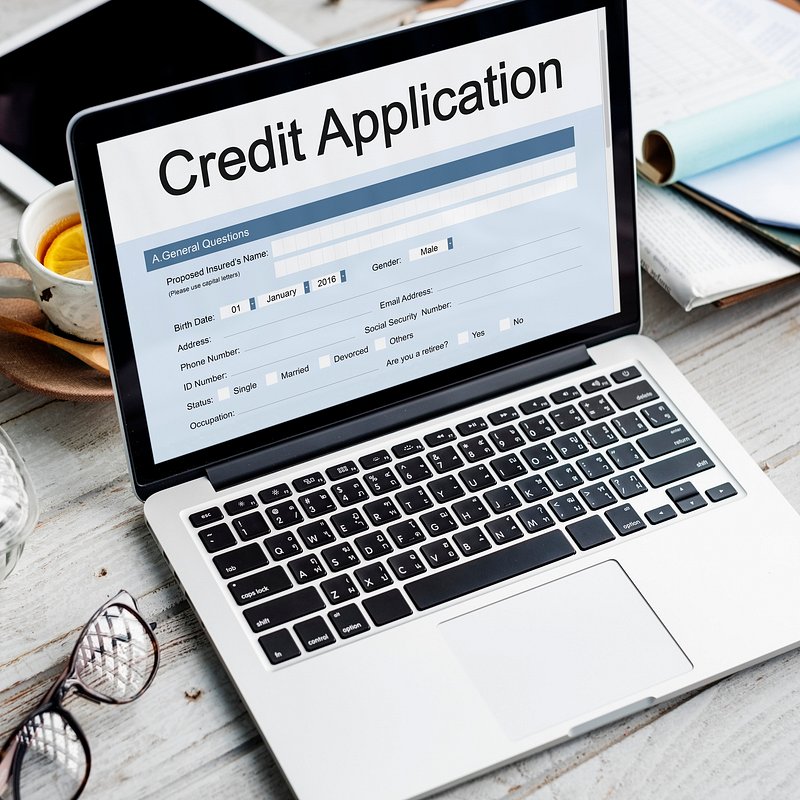How to Get a Student Loan Without Cosigner is a crucial topic for many students seeking financial assistance for their education. Navigating the world of student loans can be daunting, especially for those without a cosigner, who often face additional challenges in securing funding. This guide aims to demystify the process, providing essential information on loan options, eligibility criteria, and strategies to enhance your financial profile, ensuring that you are well-prepared to embark on your educational journey.
Understanding the landscape of student loans, including the differences between federal and private options, is fundamental. With the right knowledge and preparation, aspiring students can discover ways to obtain the necessary funds without relying on a cosigner, thereby gaining more independence in managing their educational finances.
Understanding Student Loans
Student loans are financial instruments designed to assist individuals in funding their education, covering tuition costs, fees, and sometimes living expenses associated with attending college or university. These loans enable students to pursue higher education, which can lead to better career opportunities and increased earning potential. However, borrowing money for education comes with responsibilities, including understanding the terms of repayment and interest rates.
When it comes to student loans, there are two primary categories: federal and private loans. Federal student loans are those funded by the government and typically offer lower interest rates, flexible repayment options, and various borrower protections. These loans include options such as Direct Subsidized Loans, which do not accrue interest while the student is in school, and Direct Unsubsidized Loans, which do accrue interest from disbursement. Conversely, private student loans are offered by private financial institutions such as banks and credit unions. They often have higher interest rates, less flexible repayment options, and may require a cosigner, particularly for borrowers with limited credit history.
Implications of Needing a Cosigner for Student Loans, How to Get a Student Loan Without Cosigner
A cosigner is an individual who agrees to take responsibility for the loan alongside the primary borrower, usually providing a guarantee to the lender that the loan will be repaid. This arrangement is common for private student loans, especially for students lacking an established credit history or a sufficient income to qualify for the loan independently. The need for a cosigner can have significant implications for both parties involved.
Having a cosigner can enhance a student’s chances of loan approval and may lead to lower interest rates. However, it also places financial responsibility on the cosigner, who must ensure the loan is repaid. If the primary borrower defaults, it can adversely affect the cosigner’s credit score and financial standing. This relationship can lead to potential strain on personal relationships if repayment issues arise. Thus, it is crucial for students and their cosigners to communicate openly about financial responsibilities and expectations before entering into this kind of agreement.
Cosigning a loan means sharing the responsibility of repayment, which can impact both the borrower’s and the cosigner’s financial health.
Options for Getting a Student Loan Without a Cosigner
Securing a student loan without a cosigner may seem challenging, but various lenders and loan types cater specifically to this need. Understanding the available options can empower students to pursue higher education without the burden of finding a cosigner.
Several lenders provide opportunities for students seeking loans without cosigners. These loans typically come with specific eligibility criteria and different types tailored to meet the needs of borrowers. Below are some key lenders and loan types:
Lenders Offering Student Loans Without a Cosigner
Numerous financial institutions and online lenders have recognized the demand for loans that do not require a cosigner. The following list highlights notable lenders that cater to this demographic:
- Ascent: Offers both undergraduate and graduate loans that do not require a cosigner, particularly for borrowers with strong credit or academic performance.
- Discover Student Loans: Provides options for student loans without a cosigner, allowing students to build credit while in school.
- College Ave Student Loans: Features student loans without cosigner requirements, focusing on flexible repayment options and competitive interest rates.
- Earnest: Offers personalized loans for students without needing a cosigner, with an emphasis on customer satisfaction and tailored repayment plans.
Types of Loans Available Without a Cosigner
Several types of student loans can be secured without a cosigner. Understanding these options enables potential borrowers to choose the best fit for their financial situation:
- Federal Direct Unsubsidized Loans: These loans are available to undergraduate and graduate students based on their independent status and do not require a cosigner.
- Private Loans: Many private lenders offer loans that do not necessitate a cosigner, thus providing an alternative for students who may not have access to federal loans.
- Institutional Loans: Some colleges and universities provide their own loan programs, which may not require a cosigner for eligible students.
Eligibility Criteria for Obtaining Loans Without a Cosigner
Each lender typically has specific eligibility criteria that students must meet to qualify for loans without a cosigner. These criteria can include:
- Creditworthiness: Many lenders look at the borrower’s credit score and credit history. A good credit score can enhance the chances of loan approval.
- Enrollment Status: Borrowers must usually be enrolled at least half-time in an eligible degree program to qualify for student loans.
- Income Requirements: Some lenders may require proof of income or financial stability, allowing them to assess the borrower’s ability to repay the loan.
- Academic Performance: For certain lenders, maintaining a minimum GPA may be necessary to qualify for loans without a cosigner.
“Understanding the eligibility criteria and options available can significantly improve the chances of securing a student loan without a cosigner.”
Building Credit as a Student
Establishing a solid credit history while still in school can significantly enhance your financial standing when it comes to applying for student loans without a cosigner. A robust credit history reflects your reliability as a borrower, which can be crucial in securing funding on your own.
Building credit as a student involves several proactive steps. One effective method is obtaining a student credit card, which is specifically designed for individuals with limited credit history. By using the card responsibly—making small purchases and promptly paying off the balance—you can begin to establish a positive credit profile. Additionally, you may consider becoming an authorized user on a family member’s credit card, which allows you to benefit from their established credit history while you build your own.
Importance of Credit Scores in Obtaining a Loan Without a Cosigner
Credit scores play a pivotal role in the loan application process, especially when seeking loans without a cosigner. Lenders utilize credit scores to assess the risk of lending money to an individual. Generally, a higher credit score indicates a lower risk, thereby increasing your chances of loan approval.
Maintaining a good credit score requires understanding how various factors contribute to it. The three major components affecting your score include:
- Payment History (35%): Ensuring that all bills and credit obligations are paid on time.
- Credit Utilization (30%): Keeping your credit card balances low compared to your credit limit, ideally below 30%.
- Length of Credit History (15%): The longer your credit accounts have been active, the better it reflects on your score.
“A credit score above 700 is generally considered good, while scores above 800 are regarded as excellent.”
Tips for Managing Credit Responsibly While in School
Managing credit wisely during your academic years is critical for your financial future. Developing good habits early on can lead to a better credit score, which can be advantageous when applying for loans. Below are essential tips for responsible credit management:
- Budgeting: Create a monthly budget that includes your income and expenses, ensuring that your spending aligns with your financial goals.
- Regular Monitoring: Utilize free credit monitoring services to keep track of your credit score and report, enabling you to identify any discrepancies or areas for improvement.
- Limit Applications: Only apply for credit when necessary, as multiple hard inquiries within a short period can negatively impact your credit score.
- Emergency Fund: Establish a small emergency fund to cover unexpected expenses instead of relying on credit cards, which can lead to debt accumulation.
By following these strategies, students can build a strong credit history that will not only facilitate obtaining a student loan without a cosigner but also contribute positively to their overall financial health in the long term.
Alternative Funding Sources
For students seeking financial assistance for their education, exploring alternative funding sources is essential. While traditional student loans and federal aid are common, options such as scholarships, grants, work-study programs, and crowdfunding can significantly alleviate the financial burden of tuition and related expenses. Understanding these alternatives can empower students to make informed decisions regarding their educational financing.
Scholarships and Grants
Scholarships and grants are valuable resources that provide financial support to students without the requirement of repayment. Scholarships are typically awarded based on merit, need, or specific criteria such as academic achievement, athletic ability, or community involvement. Grants, on the other hand, are often need-based and can come from federal, state, or institutional sources.
To maximize opportunities, students should consider the following types of scholarships and grants:
- Merit-Based Scholarships: Awarded for academic excellence, artistic talent, or other achievements. Examples include the National Merit Scholarship and local scholarships offered by community organizations.
- Need-Based Grants: Such as the Pell Grant, which assists low-income students in covering educational expenses.
- State-Specific Scholarships: Many states offer scholarships for residents attending in-state colleges, often requiring applicants to meet residency and academic criteria.
- Field-Specific Scholarships: These are designed for students pursuing specific areas of study, like STEM fields or education. Organizations such as the American Medical Association provide targeted scholarships for aspiring medical students.
Work-Study Programs and Part-Time Job Opportunities
Work-study programs and part-time job opportunities enable students to earn money while attending school, helping to offset education costs. These programs can enhance students’ resumes and provide valuable work experience alongside their academic pursuits.
Students can explore the following options:
- Federal Work-Study Programs: These programs provide part-time jobs for undergraduate and graduate students with financial need, allowing them to earn money to help pay for college while gaining relevant work experience.
- Campus Employment: Many universities offer on-campus job opportunities, which can include administrative roles, tutoring, or positions in the library, providing flexible hours to accommodate class schedules.
- Retail and Service Jobs: Part-time positions in local businesses can be a viable option for students. Many employers offer flexible scheduling, making it easier for students to balance work and academic commitments.
Crowdfunding Options for Financing Education
Crowdfunding has emerged as a modern approach to securing funds for educational expenses. By leveraging online platforms, students can share their educational goals and financial needs with a broader audience, potentially receiving support from friends, family, and even strangers.
Key points to consider when exploring crowdfunding include:
- Choosing the Right Platform: Websites like GoFundMe, Kickstarter, and Indiegogo allow users to create campaigns for educational financing. Each platform has unique features and fee structures, so students should compare options before proceeding.
- Crafting a Compelling Narrative: A successful crowdfunding campaign often includes a personal story that resonates with potential donors, detailing the student’s educational aspirations and financial challenges.
- Promoting the Campaign: Utilizing social media and personal networks to share the crowdfunding campaign can significantly increase visibility and funding potential.
“Alternative funding sources can empower students to achieve their educational goals without the burden of debt.”
Understanding Interest Rates and Terms: How To Get A Student Loan Without Cosigner
![]()
Interest rates play a crucial role in determining the total cost of student loans, particularly for those seeking financing without a cosigner. Understanding how these rates are calculated can empower students to make informed decisions regarding their financial future. Moreover, grasping the difference between fixed and variable interest rates is essential, as each option carries different implications for repayment over time.
Interest rates for student loans without a cosigner are typically influenced by several factors, including the borrower’s creditworthiness, the lender’s risk assessment, and prevailing market conditions. Lenders evaluate the borrower’s credit score and financial history to gauge the likelihood of timely repayment. Since students without a cosigner may have limited credit history, they may be subject to higher interest rates compared to those with a cosigner.
Fixed vs Variable Interest Rates
Understanding the differences between fixed and variable interest rates is vital when considering student loans.
Fixed interest rates remain constant throughout the life of the loan, providing borrowers with predictable monthly payments. This stability can be advantageous for long-term budgeting and financial planning. On the other hand, variable interest rates can fluctuate over time, as they are tied to market indices. While the initial rate might be lower than a fixed rate, there is the potential for increases, which can significantly affect the overall cost of the loan.
Here is a comparison of the two types of interest rates:
| Interest Type | Description | Advantages | Disadvantages |
|---|---|---|---|
| Fixed Interest Rate | Remains unchanged throughout the loan period | Predictability in payments, stable financial planning | Typically higher initial rates than variable options |
| Variable Interest Rate | Fluctuates based on market conditions | Potentially lower initial rates | Uncertainty in future payments, risk of rate increases |
It is crucial for students to evaluate their financial situation and risk tolerance when choosing between fixed and variable interest rates. A favorable interest rate can significantly decrease the total cost of borrowing over time, thus affecting the overall repayment strategy.
The choice between fixed and variable interest rates can impact a borrower’s financial future, as it affects both monthly payments and the total amount repaid over the life of the loan.
In summary, understanding interest rates and terms can equip students with the knowledge necessary to navigate their borrowing options effectively. This understanding can lead to better financial decisions and potentially lower the total cost of education financing.
Repayment Options and Strategies
Navigating the repayment of student loans can often be daunting, particularly for those who have pursued their education without a cosigner. Understanding the available repayment options and effective strategies can greatly alleviate financial stress and aid in maintaining a good credit standing. It is essential to explore various repayment plans and strategies that can help manage student loans efficiently.
Various repayment plans are available for student loans, each tailored to fit different financial situations and goals. These plans can significantly affect the overall cost of borrowing and ease the burden of repayment. Below are some common repayment options offered to borrowers:
Standard Repayment Plan
This is the default repayment plan for federal student loans. It requires fixed monthly payments over a period of 10 years. This plan is beneficial for those who can afford higher monthly payments and prefer to pay off their loans quickly. It generally results in lower interest costs over the life of the loan.
Graduated Repayment Plan
This plan starts with lower monthly payments that increase every two years. It is suitable for borrowers expecting their income to rise significantly over time, allowing them to manage initial payments that gradually become more substantial as their financial situation improves.
Extended Repayment Plan
Borrowers with more than $30,000 in federal student loans may qualify for this plan, which extends the repayment term up to 25 years. This option can lead to lower monthly payments, but it may also increase the total interest paid over the life of the loan.
Income-Driven Repayment Plans
These plans adjust monthly payments based on the borrower’s income and family size. They aim to make loan repayment more manageable for those with limited financial resources. Common types of income-driven repayment plans include:
- Income-Based Repayment (IBR): Payments are capped at 10-15% of discretionary income, and loan forgiveness occurs after 20-25 years.
- Pay As You Earn (PAYE): This plan caps payments at 10% of discretionary income and offers forgiveness after 20 years.
- Revised Pay As You Earn (REPAYE): Similar to PAYE, but offers forgiveness after 20 years for undergraduate loans and 25 years for graduate loans.
Eligibility for these plans typically requires borrowers to demonstrate financial hardship or low income. It is crucial for borrowers to analyze their financial situation carefully and choose a plan that aligns with their income and repayment capabilities.
Strategies for Paying Off Student Loans Efficiently
Implementing effective strategies can help borrowers pay off student loans more efficiently and save money in the long run. Here are some useful approaches:
- Make Extra Payments: Any additional payments made towards the principal can significantly reduce interest costs and shorten the repayment term.
- Consider Loan Refinancing: Refinancing can lead to lower interest rates, especially for borrowers with improved credit scores. This option consolidates loans into a single new loan with different terms.
- Take Advantage of Interest Rate Reductions: Some lenders offer interest rate reductions for setting up automatic payments or for making a certain number of on-time payments.
- Utilize Employer Repayment Assistance: Many employers offer student loan repayment assistance as a benefit. Borrowers should inquire about such programs when seeking employment.
Implementing these strategies can lead to significant savings and enables borrowers to manage their student debt more effectively, creating a smoother transition into financial independence.
Preparing for Loan Application
Applying for a student loan without a cosigner requires careful preparation to enhance your chances of approval. A well-organized application that showcases your financial responsibility can make a significant difference in the outcome. Below are essential steps and a checklist to streamline the process.
Checklist of Required Documents for Loan Application
Gathering the necessary documents is a crucial step in preparing your loan application. Having these documents organized and readily available can expedite the process and strengthen your application.
- Personal identification: A government-issued photo ID, such as a driver’s license or passport.
- Social Security number: This helps lenders verify your identity and check your credit history.
- Proof of income: Recent pay stubs, tax returns, or a letter from your employer to demonstrate your financial stability.
- Bank statements: Recent statements from your bank accounts to verify your savings and spending habits.
- School enrollment verification: A letter or document confirming your enrollment status at an accredited institution.
- Credit report: Obtain a recent copy to review your credit history and address any discrepancies.
Preparing a Strong Loan Application
To enhance the likelihood of loan approval, it is essential to present a well-prepared application. This involves demonstrating financial responsibility and a clear understanding of your financial situation.
- Complete application form: Ensure all sections are filled out accurately, with no omissions or errors. Double-check for mistakes before submission.
- Highlight academic achievements: Include your GPA or any honors received, as lenders may consider academic performance as a sign of responsibility.
- Demonstrate financial literacy: Provide a brief overview of your understanding of budgeting and managing expenses through a personal financial plan.
- Address potential concerns: If there are any negative aspects in your credit report, include a brief explanation to clarify any misunderstandings.
Presenting Financial Responsibility in Applications
Showing financial responsibility in your loan application can significantly impact the lender’s decision. It is important to effectively communicate your ability to manage finances.
- Consistent savings pattern: Regular deposits into your savings account indicate financial discipline and planning for the future.
- Part-time employment: An active job during your studies not only provides income but also shows your commitment to managing your finances.
- Responsible credit use: If you have existing credit accounts, maintaining low balances and making timely payments demonstrate your reliability as a borrower.
- Budgeting plan: Create and submit a detailed budget illustrating how you intend to manage your loan funds, living expenses, and educational costs.
Understanding the Risks and Responsibilities
![]()
Taking out a student loan without a cosigner can offer financial independence, but it also comes with significant risks and responsibilities that borrowers must understand. This section explores the potential challenges associated with such loans, the consequences of defaulting, and strategies for managing debt effectively after graduation.
Risks Associated with Student Loans Without a Cosigner
Borrowers who choose to secure a student loan without a cosigner often face higher interest rates due to perceived higher risk by lenders. This financial commitment can lead to substantial long-term debt if not managed properly. Furthermore, without the backing of a cosigner, students may find it more difficult to qualify for favorable loan terms or larger loan amounts. It is crucial to assess one’s financial situation, including income potential after graduation, before proceeding with such loans.
Impact of Defaulting on a Student Loan
Defaulting on a student loan can have severe and long-lasting repercussions. When a borrower fails to make payments for a specified period, typically 270 days, the loan is considered to be in default. The consequences of defaulting include the following:
- Damage to Credit Score: Defaulting can significantly lower your credit score, making it challenging to secure future loans or even rent an apartment.
- Collection Actions: Lenders may initiate collection actions, which can include garnishing wages or withholding tax refunds.
- Loss of Financial Aid: Default can disqualify students from receiving additional federal financial aid.
- Legal Consequences: In some cases, borrowers may face lawsuits from their lenders.
Managing Student Loan Debt Post-Graduation
After graduation, managing student loan debt effectively is essential for long-term financial health. Proactive strategies can help ensure that borrowers stay on track with their repayment plans. Key practices for effective debt management include:
- Creating a Budget: Developing a detailed budget that accounts for loan payments and other expenses can help borrowers manage their finances more effectively.
- Exploring Repayment Options: Familiarizing oneself with various repayment plans, such as income-driven repayment plans, can provide flexibility based on income levels.
- Making Extra Payments: Whenever possible, making extra payments can help reduce the principal balance and overall interest paid over the life of the loan.
- Staying Informed: Regularly reviewing loan statements and staying updated on interest rates and loan terms can empower borrowers to make informed decisions.
“The key to managing student loan debt is understanding your loans, making timely payments, and exploring all available repayment options.”
Final Thoughts
In summary, exploring how to obtain a student loan without a cosigner opens up new avenues for students eager to further their education. By understanding the available options, building credit, and being aware of the responsibilities that come with student loans, individuals can make informed decisions that impact their academic and financial futures. As you navigate this journey, remember that there are numerous resources available to support you in achieving your educational goals.
Common Queries
Can I get a federal student loan without a cosigner?
Yes, federal student loans do not require a cosigner, as they are based on financial need and do not involve credit checks.
What is the minimum credit score needed for private loans without a cosigner?
While it varies by lender, a minimum credit score of around 650 is often required for private loans without a cosigner.
Are there any specific lenders known for offering loans without a cosigner?
Yes, some lenders specialize in student loans without cosigners, including Ascent, College Ave, and Earnest.
What can I do if I have no credit history?
You can build credit by obtaining a secured credit card, making on-time payments, and maintaining low credit utilization.
How can I improve my chances of loan approval without a cosigner?
Improving your credit score, demonstrating financial responsibility, and providing a solid proof of income can enhance your approval chances.







